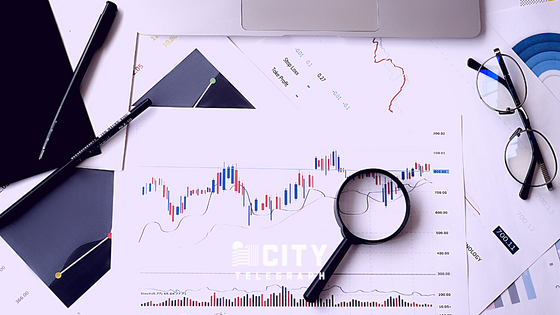Do you want to learn how to start trading cryptocurrency?
Why not, because many beginners who have mastered the art of crypto trading become rich. At the same time, there are novice traders who lose their earnings on crypto trading for a long time.
The difference between winners and losers is that the winners know their stuff and follow the principles of risk management. Losers mostly have a gambling mentality, and they give vent to emotions like greed and fear.
In this cryptocurrency trading guide, we will help you find your way to victory and wealth.
Let’s learn the basic principles so you don’t make the same mistakes that others make. Also, it will help you make a lot of money trading.
First of all, let us congratulate you on your decision to start trading cryptocurrencies. This is an age of new beginnings, and you may be one of the first in your social group to think outside the box.
It is always associated with risk, but if history has taught us anything, then wealth and power go to those who take more risks.
So, putting philosophy aside, let’s figure out how best to enter the world of cryptocurrency trading.
There are two main types of crypto trading.
In this type of trading, fiat currency (USD, GBP, EUR, RUB) is the base currency and you trade it against cryptocurrencies such as Bitcoin, Ethereum and so on. The goal here is to increase the amount of fiat money and take profits regularly.
In the next section of this guide, we will look at an example of using fiat money for crypto trading.
This is perhaps the least understood and most profitable form of crypto trading. In this type of trading, you use one cryptocurrency as the base cryptocurrency and trade against other coins ( altcoins ) to increase the amount of the base cryptocurrency. For example, you start with 0.1 BTC and trade bitcoin against other coins like ETH and BNB to get your BTC stock above 0.1.
This type of trading is also often referred to as altcoin trading. During bull market periods, this is one of the best ways to increase your bitcoin savings.
Many people who start trading from scratch stick with the fiat-to-crypto option, as it seems to them easier and more familiar. However, out-of-league traders who trade on a crypto-to-crypto basis make more significant profits over time.
Another important point to figure out at this stage is who exactly do you want to be: an intraday crypto trader or a quiet crypto investor.
- Your current profession.
- Your “ risk appetite” .
- your trading style.
- Your long-term emotional state.
- How long have you been following the cryptocurrency market?
The last two factors are the most important and decisive.
However, with constant practice, over time, you can learn to manage emotions and behavior, which is the key to success in crypto trading. We will explore this in more detail in the next section.
Many people who entered the cryptocurrency world in the early days now combine investment and trading. The reason for this is the wild price volatility of cryptocurrencies, which provides an excellent opportunity to increase your savings when using a good strategy.
Short-term trading is the purchase of cryptocurrencies in order to make a profit in a short period of time, such as days, weeks or months. Many people try their hand at intraday trading, where they buy and sell cryptocurrencies within a day or a couple of days.
Note that in short-term trading (also called intraday trading), you can win or lose multiple days in a row. Stop loss is the best risk management tool that protects you from losing most of your money. However, if you are used to trading on the stock exchange , the typical stop loss placement logic is not suitable for cryptocurrency trading due to the very high volatility.
Long-term trading can also be considered as investing in cryptocurrency . Even if you are a beginner, you may have heard of the popular term HODL. It means “ Hold on to your dear life ” (hold on to your dear life). After buying a cryptocurrency such as Bitcoin, you simply hold it for a significant long time (several years) and then sell it for a significant profit.
This option is recommended for those who believe that certain cryptocurrencies such as Bitcoin, Ethereum and others will skyrocket and their investments will grow several times.
The advantage of long-term cryptocurrency trading is that you are protected from short-term volatility and you do not need to regularly follow the trading chart. Instead, you should study the fundamentals in order to plan your trading strategy. This option is only suitable for coins of the “ blue chips ” category , such as Bitcoin, Ethereum, Binance Coin and some others.
Now consider what is needed to start trading cryptocurrency.
You will need the following things:
- Bitcoin.
- Fiat money like USD, GBP, AUD, INR.
The basic idea is to buy bitcoins from your local exchanges and then transfer them to cryptocurrency trading platforms.
You can decide how much funds you would like to invest in cryptocurrency trading. The general consensus among many wise crypto traders is that you should only invest in trading the money that you are not afraid to lose.
You need a crypto exchange that offers high liquidity and sophisticated tools for trading cryptocurrencies. Since you need to buy bitcoins or other cryptocurrencies first, it must support fiat currencies.
Binance has been the best site for trading cryptocurrencies in the last few years. One of the main reasons is that it offers a wide range of cryptocurrencies and one of the best trading engines.
- Spot trading.
- Margin trading.
- Arbitrage trading.
- Futures trading ( Binance Futures ).
This service also acts as a bank, as you can earn interest on free funds. You can learn more about it in our Binance review .
This is a skill that you can develop as you advance in crypto trading. However, a basic understanding of how to read charts and technical indicators such as RSI, MACD and Bollinger Bands will help you a lot in getting started.
Learning charts and technical indicators does not take much time, and with regular practice, you can hone your skills. Most trading websites offer integrated charts with technical analysis tools. You can also use something like Tradingview to check charts and do technical analysis.
We strongly recommend that you study this point first. Many smart people end up losing all their money because they become overconfident and don’t follow basic risk management principles. Remember that you cannot win every trade you open, and with proper risk management, you will minimize your losses.
Note for advanced users: if you come from the traditional stock market, you may be surprised by the wild fluctuations in the price of cryptocurrencies. Thus, traditional hourly or daily resistance and support levels may not be useful here. This is one of the reasons why we highly recommend that you try paper trading before betting real money.
Before investing real money in crypto trading, it is worth using a demo account or “ trading on paper” . In this case, you can work out without risking your savings. This way, you can always test your trading skills before you start investing your hard earned money.
3Commas is one such platform that offers the opportunity to “ trade on paper” for free.















